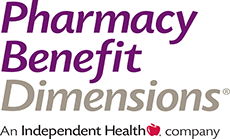Following Eli Lilly’s March 1st announcement, Novo Nordisk and Sanofi will also cut insulin prices and cap out-of-pocket costs for patients with commercial insurance. These changes have been implemented to mirror the capped monthly insulin costs of $35 for Medicare Part D recipients following the implementation of the Inflation Reduction Act (IRA). Patients with diabetes covered by private insurance were not protected by the IRA changes and were often still required to pay high out-of-pocket costs for insulin, a lifesaving medication. All three companies have now capped out-of-pocket costs at $35 per month for specific insulin products for patients with commercial insurance. Changes have been made for both short-acting and long-acting insulin injectables.
Short-acting insulin is injected by patients before meals or at times when their blood glucose may rise. Three commonly used short-acting insulins include Humalog®, NovoLog® and Apidra®. Eli Lilly produces Humalog® (insulin lispro), which will have costs reduced by 70%. Novo Nordisk produces NovoLog® (insulin aspart), which will have costs decreased by 75%. Sanofi produces Apidra® (insulin glulisine), which will have costs cut by 70%. After these price changes, NovoLog® vials and pens will be the least costly, followed by Humalog® products.
Long-acting insulin is injected by patients to control their blood glucose levels throughout the day. Sanofi and Eli Lilly produce the most used long-acting insulin injectables including Lantus®, Rezvoglar® and their unbranded interchangeable products. Sanofi will decrease Lantus® costs by 78% and Lilly will reduce Rezvoglar® prices by 70%.
Eli Lilly’s initial price cuts will go into effect on April 1, 2023, followed by Novo Nordisk’s and Sanofi’s cuts on January 1, 2024. Eli Lilly, Novo Nordisk and Sanofi control a combined 90% of the insulin market in the United States, so these changes will greatly increase accessibility and affordability for patients with diabetes.






